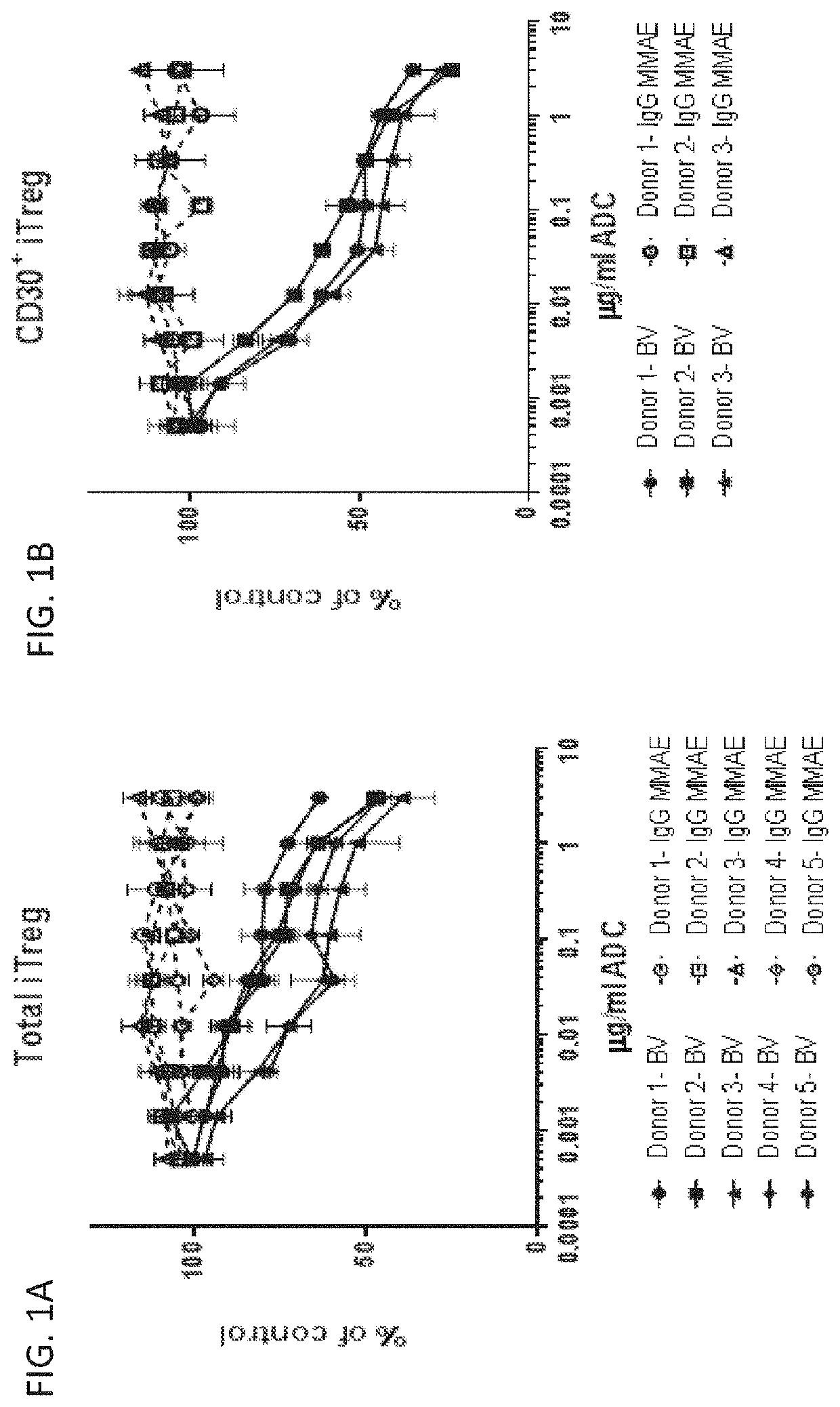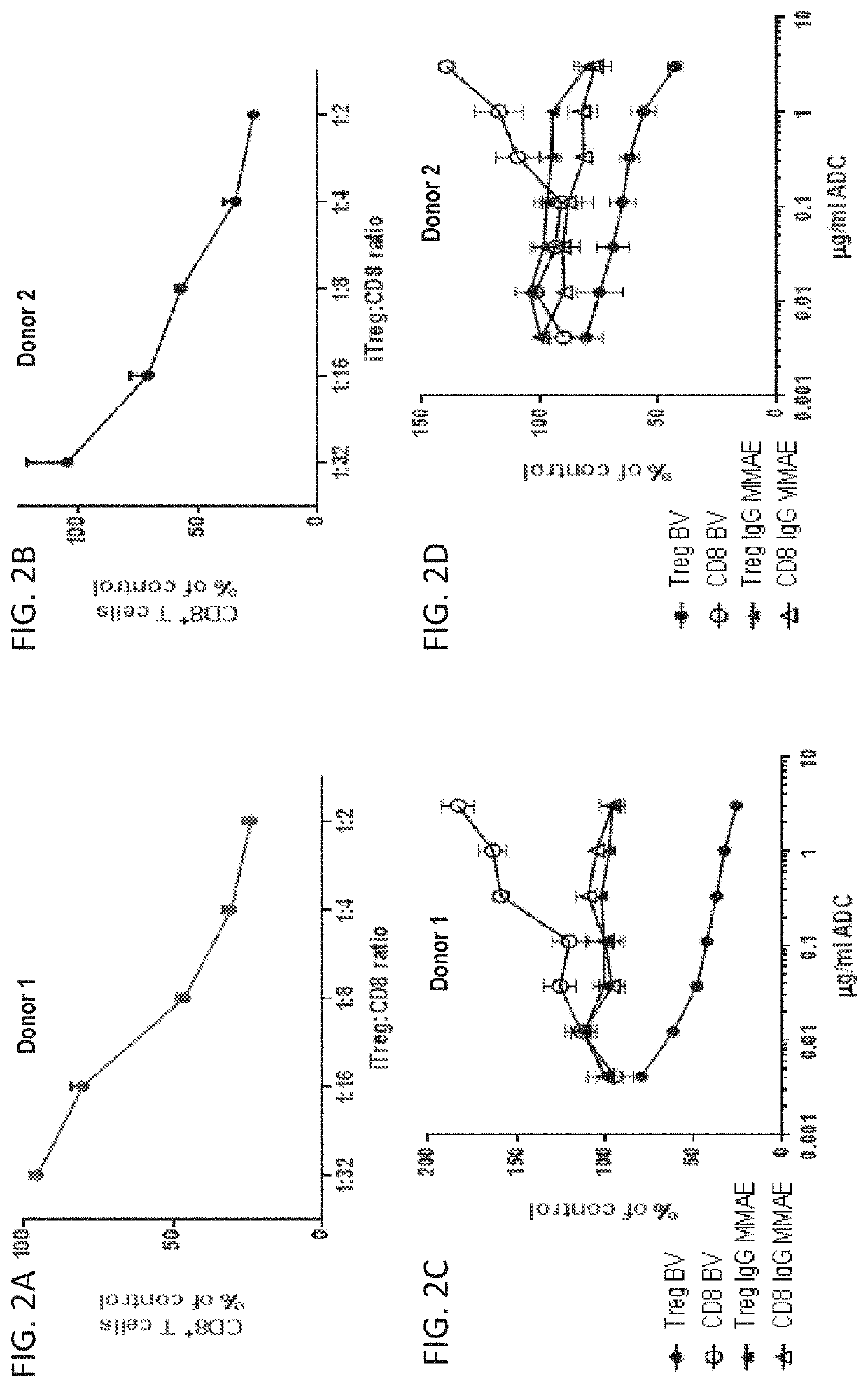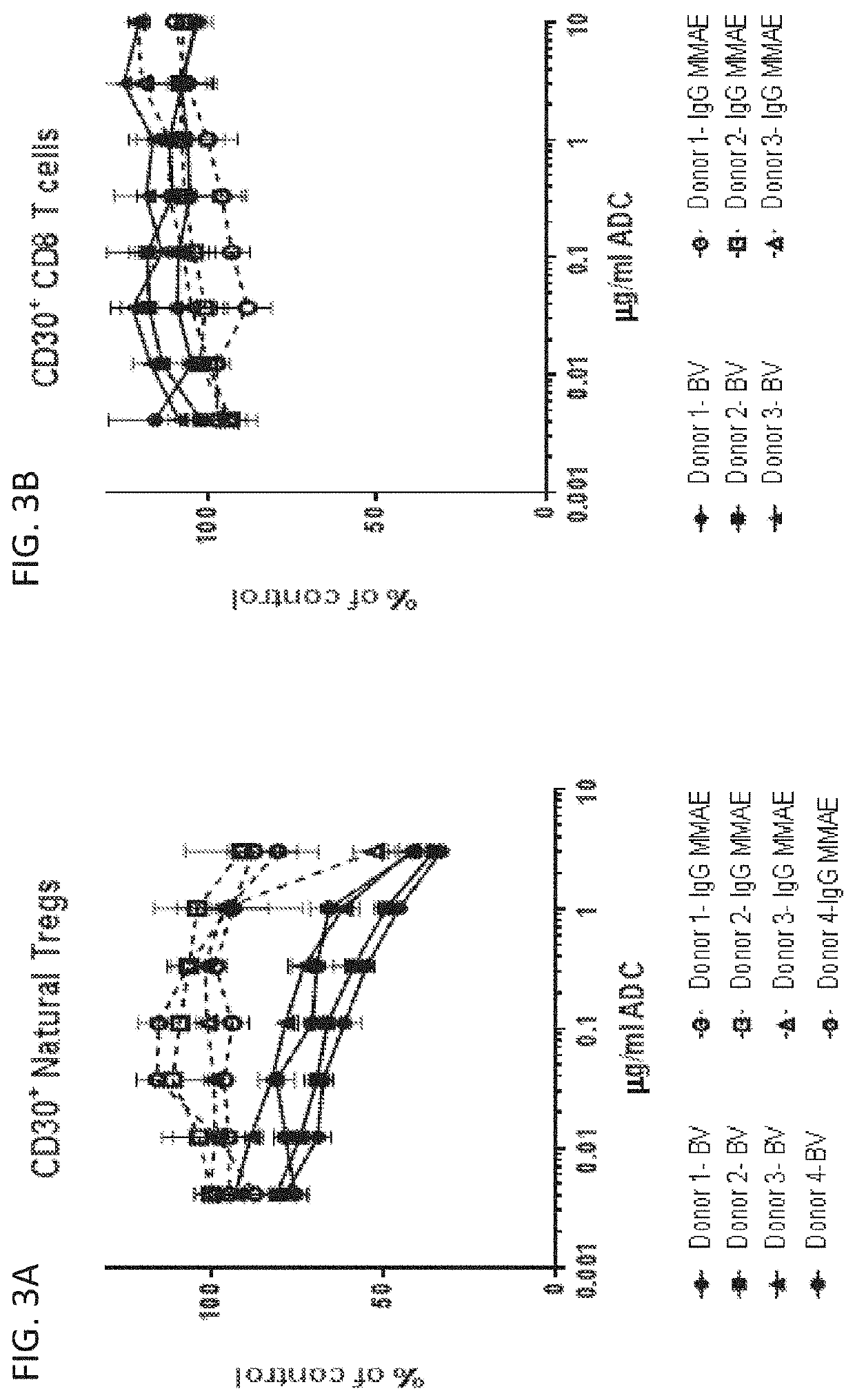Modulating the immune response using antibody-drug conjugates
a technology of antibody-drug conjugates and immune response, which is applied in the direction of immunoglobulins, peptides, drugs, etc., can solve the problems of only moderate efficacy and no patient experienced tumor regression, and achieve the effect of decreasing the activity of cd30+ t regulatory cells
- Summary
- Abstract
- Description
- Claims
- Application Information
AI Technical Summary
Benefits of technology
Problems solved by technology
Method used
Image
Examples
example 1
Antibody Drug-Conjugate Impairs Proliferating Inducible T Regulatory Cells In Vitro
[0407]CD4+ T cells, isolated from healthy donor PBMC (Astarte Biologics, Bothell Wash.) were used to generate inducible T regulatory cells (iTregs). iTreg differentiation was performed over 1-2 weeks in 6-well tissue culture plates at 37° C. Cells were incubated with CD3 / CD28 MACS iBead particles (Miltenyi biotec) at a 1:32 bead / cell ratio, in 2-3 ml of X-VIVO 15 media (Lonza) containing 1L-2 (50 ng / ml), TGFβ (50 ng / ml), and a 1:100 dilution of Lipid-Mixture 1 (Sigma-Aldrich). iTregs were evaluated for FoxP3 and CD30 expression by FACS analysis on an Attune NXT flow cytometer (Life Technologies). Following differentiation, individual donor iTreg populations ranged between 20-80% FoxP3+ and 40-70% CD30+.
[0408]To evaluate the effect of brentuximab vedotin (BV), and anti-CD30 antibody drug-conjugate on iTreg viability, cells were driven to proliferate in vitro in the presence of BV or control antibody dr...
example 4
D30 Antibody Drug-Conjugate Reduces Human T Regulatory Cells and Increases CD8 / Treg Ratio in a Xeno-GVHD Model
[0411]To evaluate activity of BV on activated human T cell subtypes in vivo, a model of acute xenograft-driven graft-versus-host disease (xeno-GVHD) was employed. In this model, immune deficient NSG mice are lightly irradiated (2Gy) on day 0 followed by adoptive transfer of 5×106 healthy donor PBMC on day 1. Disease course is driven by activation and proliferation of mouse-reactive human CD4+ and CD8+ T cells, and disease kinetics are slowed by addition of human T regulatory cells.
[0412]To evaluate the effect of BV on activated CD8+ T cells and Tregs in vivo, Xeno-GVHD mice received a single i.p. injection of PBS or BV (3 mg / kg) in PBS on day 5. On day 12, spleens were harvested and manually dissociated through a 70 μm cell strainer. Following centrifugation, individual spleens were resuspended in 3 ml of ACK lysis buffer (Sigma) for 3 minutes to remove red blood cells. Cell...
example 5
D30 Antibody Drug-Conjugate Reduced CD30+ T Regulatory Cells in Patients with Classical Hodgkin Lymphoma
[0414]The effects of BV on circulating immune cells has not previously been fully elucidated. Sixty-two patients adult patients with classical Hodgkin lymphoma (cHL) that had relapsed or was refractory to frontline chemotherapy were enrolled in a study to evaluate treatment with BV. Patients were excluded if they previously received prior salvage therapy, including salvage radiotherapy, for refractory cHL; BV or any immuno-oncology therapy affecting the PD-1, CTLA4, or CD137 pathways; and / or allogeneic or autologous stem cell transplant (ASCT). BV was administered to the patients at a dose of 1.8 mg / kg on Day 1 and the patients were assessed on Day 8. Immunophenotyping of peripheral blood by flow cytometry was performed by Q2 Solutions on heparinized whole blood. Cell pellets, resulting from plasma banking, were sent to Adaptive for T Cell Receptor β (TCRβ) sequencing. Peripheral ...
PUM
| Property | Measurement | Unit |
|---|---|---|
| Fraction | aaaaa | aaaaa |
| Fraction | aaaaa | aaaaa |
| Ratio | aaaaa | aaaaa |
Abstract
Description
Claims
Application Information
 Login to View More
Login to View More - R&D
- Intellectual Property
- Life Sciences
- Materials
- Tech Scout
- Unparalleled Data Quality
- Higher Quality Content
- 60% Fewer Hallucinations
Browse by: Latest US Patents, China's latest patents, Technical Efficacy Thesaurus, Application Domain, Technology Topic, Popular Technical Reports.
© 2025 PatSnap. All rights reserved.Legal|Privacy policy|Modern Slavery Act Transparency Statement|Sitemap|About US| Contact US: help@patsnap.com



